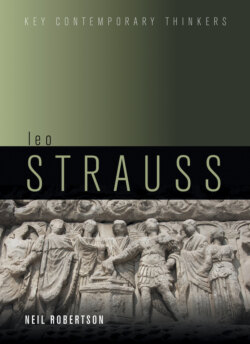Читать книгу Leo Strauss - Neil G. Robertson - Страница 8
Who is Leo Strauss?
ОглавлениеLeo Strauss was born in 1899 into an observant Jewish family in Germany. Even before attending university, he converted to “simple, straightforward political Zionism” (JPCM 460), and was involved in the Zionist movement during his twenties. Strauss studied philosophy at the University of Marburg and the University of Hamburg. While a student, he served as an assistant to Edmund Husserl, the founder of the school of phenomenology. Strauss attended some classes and seminars of Martin Heidegger, whom Strauss considered to be the greatest thinker of his generation. After completing a doctorate at the University of Hamburg under Ernst Cassirer in 1921, Strauss became a researcher at the Academy for the Science of Judaism in Berlin, focusing on the history of Jewish philosophy, including work on Moses Mendelssohn, Spinoza, and Maimonides. His first book, Spinoza’s Critique of Religion, was published in 1930. At about this time, Strauss had what he described later as a “change of orientation” that opened up for him the possibility of a recovery of pre-modern rationalism. He later stated that the first expression of his “change of orientation” was to be found in his 1932 review of a book by Carl Schmitt, the important legal theorist who joined the Nazi Party shortly afterward. When the Nazis came to power in 1933, Strauss was in France on a Rockefeller research fellowship. The following year, he moved to England to work on Thomas Hobbes. In 1937, he went to the United States, eventually securing a permanent position at the New School for Social Research in New York City. In 1949, Strauss began two decades of teaching in the Department of Political Science at the University of Chicago. He retired and was named Professor Emeritus at the University of Chicago in 1968, but continued teaching and giving guest lectures at Claremont Men’s College and then at St. John’s College in Annapolis, Maryland, until his death in 1973.
